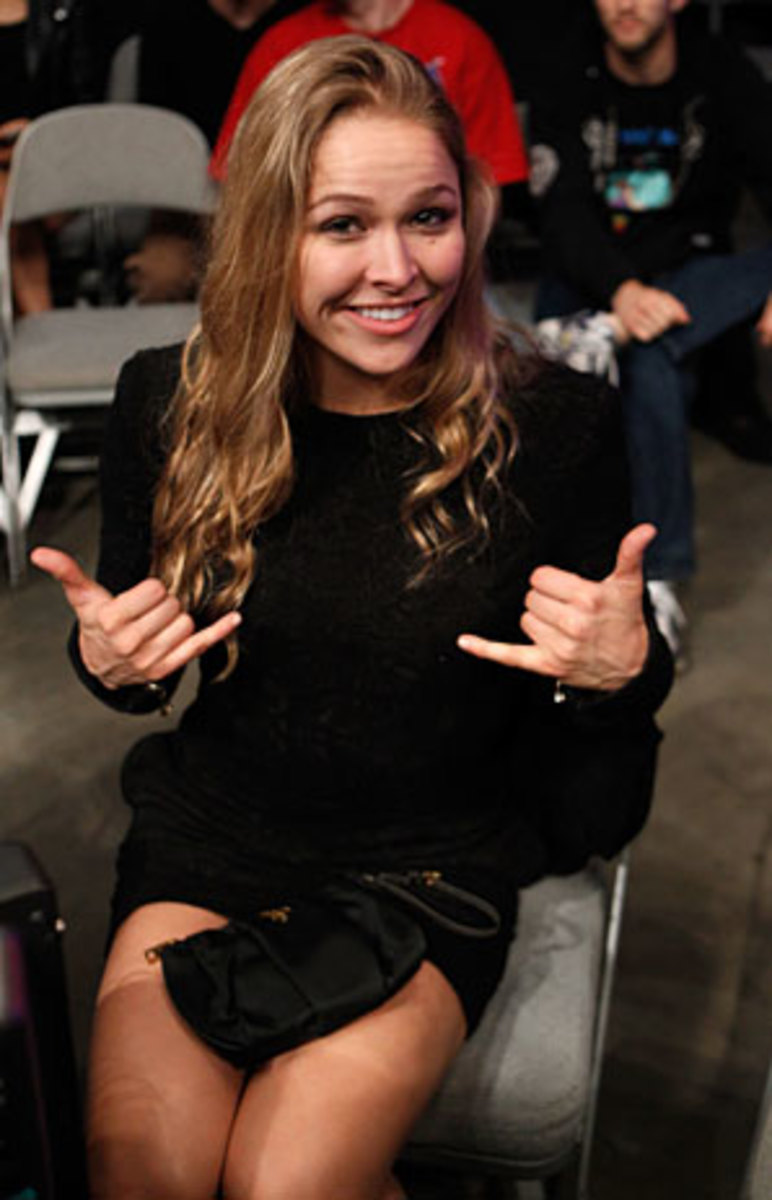Five outtakes with Ronda Rousey


Despite requesting 23,234 words in the Nov. 5 issue of Sports Illustrated (on newsstands now) to explain why and how MMA fighter and armbar specialist Ronda Rousey is the sport's most transcendent star, the editors at SI insisted we cover other niche events like the ongoing World Series, Week 9 of the NFL and the start of the NBA season. Rather than let these gems from extensive interviews with or about Rousey waste away on my hard drive, SI.com presents the outtakes from our interviews:
1. Long lineage of fighters. Ronda Rousey comes from a long line of fighters, but not in the way of the Mayweather clan. Fighters in her family battled in the most unusual of fashions, dating back to her great-grandfather on her mother's side, Alfred Waddell. On an island off the coast of Venezuela in the 1920s, Waddell had dream even more audacious than Rousey's aspiration breaking people's arms for money: He wanted to heal them as a physician. The black-skinned Venezuelan boarded a boat with his bride, Emilia, and headed to New York City to begin his studies at Columbia University. After graduation, however, no medical schools in the United States would admit a black Latino. Undeterred, Waddell submitted applications to medical schools in Canada, where he gained admittance and began a long career as a respected physician. Today, Dr. Waddell is a celebrated figure, especially during Black History month. A CBC documentary, Before His Time, chronicles his journey.
• SEGURA: Women in UFC 'absolutely going to happen'
2. The other side of the family tree. While it's not hard to see how Ronda is like her 1984 World Judo Champion, armbarring mother, Dr. AnnMaria De Mars, ("She was the Armbar Lady and now I'm Armbar Lady Part Duece", says Rousey), the parallels to her father are obscured. When I asked Ronda how she is like her late father, Ron, she paused for a longer period than it took for her to win the Junior World Judo Championships at age 17 (four seconds). "I get my courage from him," she finally says. Rousey gives an example of that fortitude when she relays a story about when Ron, a division chief at ship and airplane manufacturer General Dynamics, promoted the first black man to a supervisory position. Two white employees under the new supervisor's purview, went to Rousey's father to insist, "We're not going to work for a black man," as De Mars, recalls. "Ron said, 'then you will be fired by a black man.'" Everyone, according AnnMaria, went back to work. "He just had that kind of thing about him where he was incredibly moral and incredibly courageous," Rousey says. "That's the way I try to be like him."
3. V is for victory ... or is it vampire? As outlined in this week's SI, Ronda and her family moved from Rialto, Calif. to Minot, N.D., in part, because of Minot State University's lauded speech therapy program agreed to treat Rousey for free. A lack of oxygen to her brain at birth rendered the future fighter's speech incoherent, even to family members. Years of treatment, however, helped Ronda overcome the impediment and issue some of the MMA's most famous verbal smackdowns. But when did her mother, Dr. DeMars, know Ronda's speech improved enough to leave the Minot State program? One day, before Ronda's eighth birthday, when AnnMaria asked Ronda after therapy how the session went, little Ronda lowered her eyes and said, "It was terrible. That talking teacher, she hit me and she slapped me."
The mother listened closely as her daughter continued.
"And she made me eat broken glass and then she took her hair off and it was all covered with blood and she took me the top of a building, and she turned into a vampire and she threw me off."
AnnMaria, amused, wrote an email detailing her daughter's fiction to the head of the speech department. The equally entertained department head, who knew Ronda still struggled pronouncing V's, wrote back, "I just want to know, when she said vampire, did she get the 'V' sound right?"
• VIDEO: Ronda Rousey is the perfect storm
4. We saw her first. The latest SI isn't Rousey's first time gracing the pages of the magazine. In the Sept. 17, 2001 edition, she appeared as a Face In the Crowd with the following text: "Ronda, 14, went 9-0 while winning the 13-14 age-group national, international and Junior Olympic gold medals in the 134-pound class this summer. She also was first in the 15-16 age group in the 125-pound class at the international championships and in the youth Canada Cup."
5. It's Dr. Rousey to you. Bet you didn't know that Ronda Rousey has a doctorate from Harvard. Her subject matter? Mixology. Let her explain: "I had a certificate that said, doctor of mixology, Harvard University, that I actually got from Harvard University. A friend of mine was a research assistant over there and it was one of those student or university perks and she brought me in on that. So I am a doctorate from Harvard and it only took me one afternoon. Eat that, you smart b---hes!" But you won't find the degree hanging on any of her walls. "There are some teeth marks on it and some coffee stains on it because [Rousey's pit bull] was teething at one point and bit it and then, it's lost in what is The Habitat. That's what I call my house."
